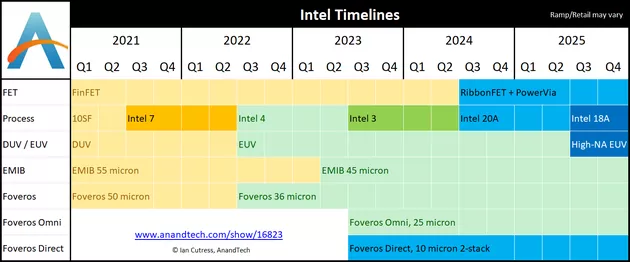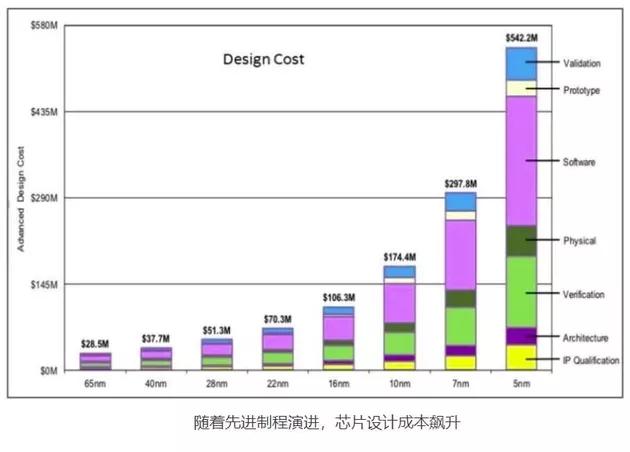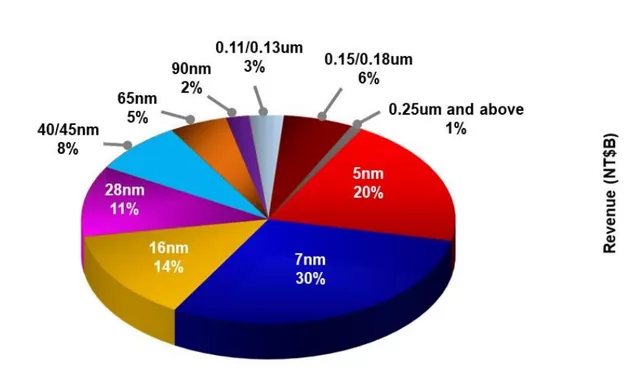On June 5, Taiwan's economic daily, Lianhe news network and other Taiwan media reported that TSMC, an enterprise on the island, would spend NT $1trillion (about 226.2 billion yuan) to expand the 2nm process capacity layout in Taichung, and had proposed the demand for plant land to the local regulatory authorities. In fact, it may be too early to talk about the 2nm process. After all, TSMC and Samsung have not yet achieved mass production of 3nm.
According to the plan, Samsung will take the lead in TSMC's mass production of 3nm process in the first half of 2022, while TSMC previously disclosed that the time of 3nm mass production is the second half of 2022. However, recently, industry analyst guomingpei disclosed on twitter that TSMC's 3nm and 4nm improved versions will not achieve mass production until 2023, which will lead to this year's new iphone Only 5nm modified version and 4nm process can be used.
As for the next generation 2nm process, Taiwan's "business times" reported that TSMC started 2nm R & D last year and plans to start mass production in 2025. The executives of Samsung's chip OEM business also disclosed in October last year that the company is expected to use its 2nm manufacturing process to mass produce chips in the second half of 2025. This highlights the competitive situation of the two foundry giants, who have announced large-scale investment plans in the past two years.

Screenshot of tom's hardware Report
Of course, Intel is also one of the three players in the world who still have the will and conditions to develop advanced manufacturing processes. The company disclosed in April this year that it is expected that the next generation Intel 18a process (equivalent to 1.8nm) will be put into production in the second half of 2024. Intel CEO Kissinger even believes that the company will once again become the leader in process performance with its 18a process. In order to achieve this goal, Intel has placed an order for a high numerical aperture extreme ultraviolet lithography machine with a Dutch ASML of nearly 2billion yuan.

Intel process roadmap (data map)
In fact, at this time, semiconductor manufacturing giants such as TSMC should also consider the market space of 2nm and more advanced processes while pursuing process upgrading. After all, under the background that mature processes (28nm and above) can meet most needs, with the growth of smart phones, the largest user of previous advanced processes, reaching the ceiling, if there is no application field of the same magnitude, it will not be able to share the R & D and production costs of more advanced processes such as 2nm, which may lead to the cost performance reduction of cutting-edge processes and fewer users.
According to the data released by the center for security and emerging technologies (CSET) of Walsh School of foreign affairs at Georgetown University in the United States, TSMC has a 12 inch wafer with a 3nm process, and the OEM manufacturing cost is about US $30000, about 1.75 times that of 5nm. With the die area unchanged (i.e. upgrading the architecture without increasing the number of transistors) and the yield unchanged, the future [Apple]( https://apple.pvxt.net/c/1251234/435400/7639?u=https%3A%2F%2Fwww.apple.com%2Fcn%2Fmusic%2F ) If the A17 processor adopts the 3nm process, the cost will rise to $154 / piece, making it the most expensive component of the iPhone, while the 5nm A15 processor is only the third most expensive component of the iPhone 13 (lower than the display and camera module).

(data map)
At present, the users of TSMC's upcoming 3nm process are still unclear. In December, 2021, the Taiwan media "DIGITIMES" reported that fewer and fewer customers could afford TSMC's advanced manufacturing processes below 7Nm, most of them stayed at 7Nm, and the only major customers below 5nm were apple, MediaTek, Qualcomm, AMD, NVIDIA, Xilinx, and cross-border large enterprises such as Google and Tesla. As for 3nm that has not been mass produced, there are fewer customers. Except apple, Intel will be the second major customer to adopt TSMC 3nm process.

In the first quarter of 2022, the proportion of TSMC's manufacturing process revenue source: TSMC
At 2nm, the only customers that the island media can think of at present are big companies such as apple and Intel. With Intel's own mass production of 18a process, it is unknown whether it will place orders with TSMC in the future. The Business Times reported that since the first batch of TSMC 2nm chips will be delivered to customers in 2026, it is unclear which apple chips use the 2nm process. Some analysts speculate that Intel will use TSMC's 2nm to manufacture image modules in its lunar lake processor.
In fact, without US sanctions, Huawei would undoubtedly be one of the users of TSMC's most advanced manufacturing processes, which is very important for TSMC to dilute its R & D costs. However, it backfired. Although TSMC is "expensive" as the world's largest wafer foundry, it is still subject to the United States in terms of technology and equipment.
According to the financial report, TSMC's total revenue in 2021 was NT $1.59 trillion (about RMB 354.9 billion), an increase of 18.5% year-on-year; The net profit before tax was NT $663.1 billion (about RMB 148billion), a year-on-year increase of 13.4%. In 2020, the growth rates of these two performance indicators were 25.2% and 50.0% respectively. Comparatively speaking, the revenue scale of SMIC, the largest wafer foundry in Chinese Mainland, is only one tenth of that of TSMC, but the growth rate is faster. According to the financial report, the unaudited revenue of SMIC international in 2021 was 35.631 billion yuan, a year-on-year increase of 29.7%; The net profit was 10.733 billion yuan, a year-on-year increase of 147.8%.
Wen / Lvdong